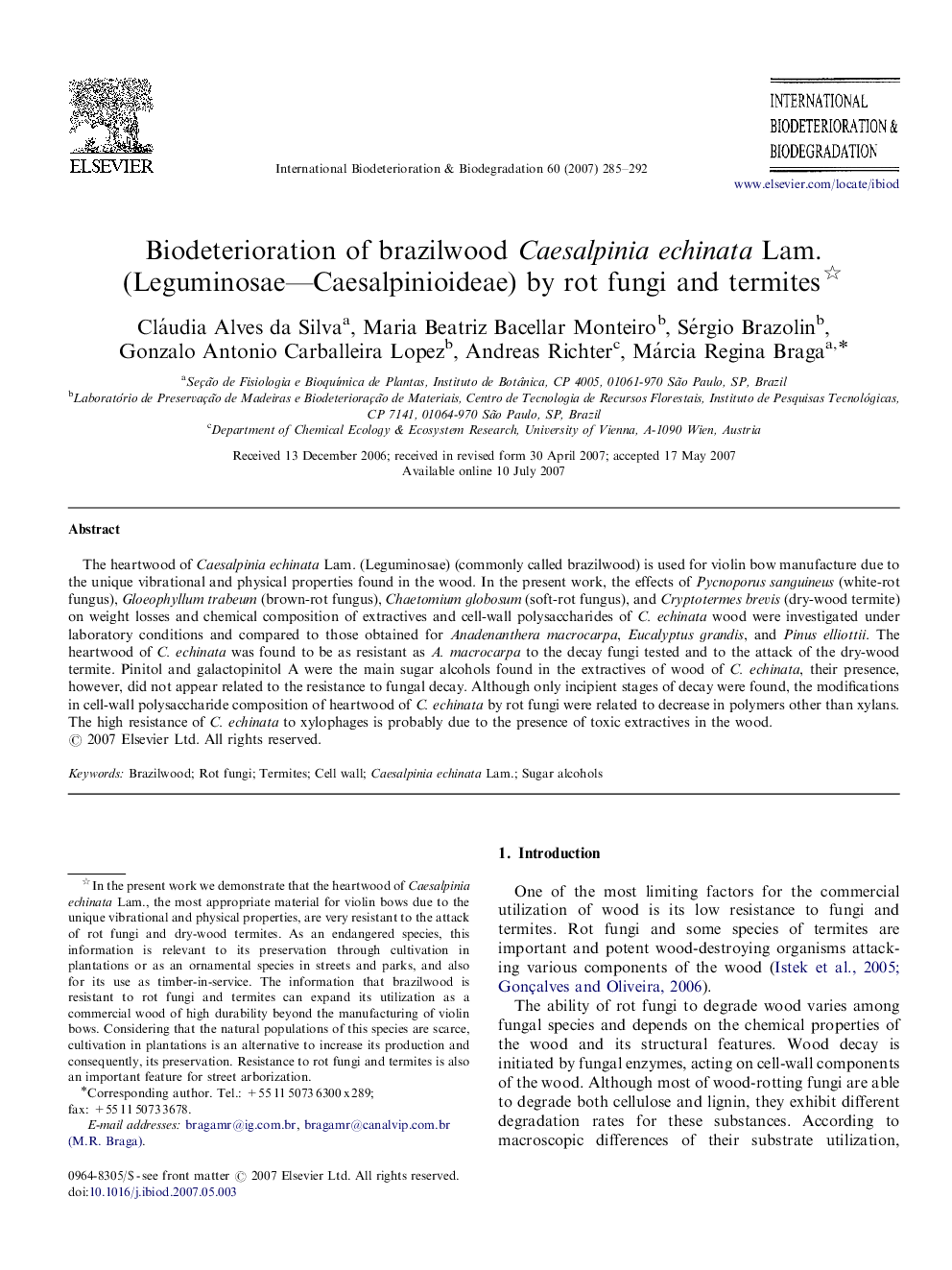| کد مقاله | کد نشریه | سال انتشار | مقاله انگلیسی | نسخه تمام متن |
|---|---|---|---|---|
| 4365819 | 1616349 | 2007 | 8 صفحه PDF | دانلود رایگان |

The heartwood of Caesalpinia echinata Lam. (Leguminosae) (commonly called brazilwood) is used for violin bow manufacture due to the unique vibrational and physical properties found in the wood. In the present work, the effects of Pycnoporus sanguineus (white-rot fungus), Gloeophyllum trabeum (brown-rot fungus), Chaetomium globosum (soft-rot fungus), and Cryptotermes brevis (dry-wood termite) on weight losses and chemical composition of extractives and cell-wall polysaccharides of C. echinata wood were investigated under laboratory conditions and compared to those obtained for Anadenanthera macrocarpa, Eucalyptus grandis, and Pinus elliottii. The heartwood of C. echinata was found to be as resistant as A. macrocarpa to the decay fungi tested and to the attack of the dry-wood termite. Pinitol and galactopinitol A were the main sugar alcohols found in the extractives of wood of C. echinata, their presence, however, did not appear related to the resistance to fungal decay. Although only incipient stages of decay were found, the modifications in cell-wall polysaccharide composition of heartwood of C. echinata by rot fungi were related to decrease in polymers other than xylans. The high resistance of C. echinata to xylophages is probably due to the presence of toxic extractives in the wood.
Journal: International Biodeterioration & Biodegradation - Volume 60, Issue 4, 2007, Pages 285–292